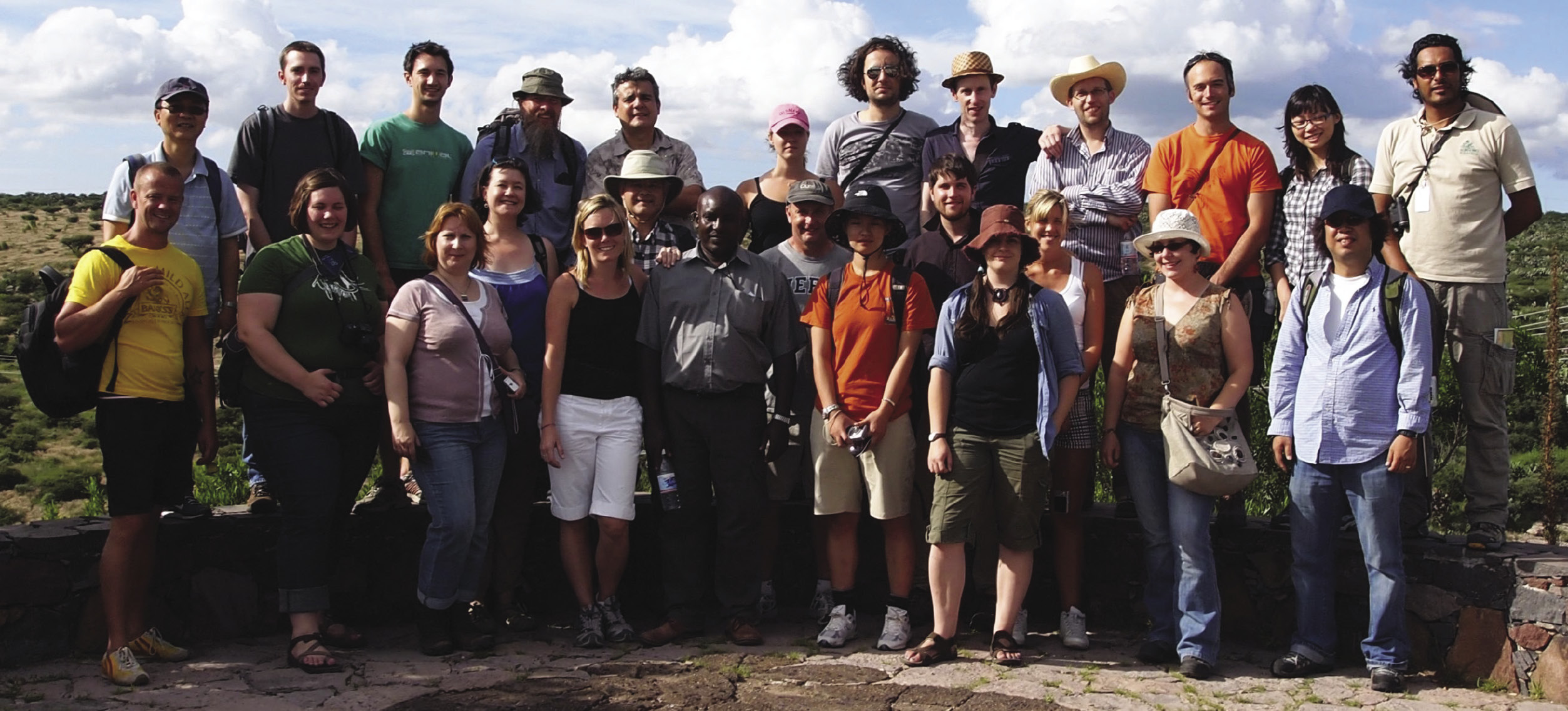- Home
- Publications
- PAGES Magazine
- Paleochronology Building Workshop
Paleochronology building workshop
Maarten Blaauw, J. Andrés Christen and Workshop Participants
Past Global Changes Magazine
19(1)
34
2011
Maarten Blaauw1, J. Andrés Christen2 and Workshop Participants
1School of Geography, Archaeology and Palaeoecology, Queen's University Belfast, UK; maarten.blaauw qub.ac.uk
qub.ac.uk
2Centro de Investigación en Matemáticas, Guanajuato, Mexico
San Miguel de Allende, Mexico, 17-21 August 2010
Chronologies are vital for the study of past global change. The strength of conclusions based on paleoenvironmental reconstructions is often constrained by the precision and reliability of their chronologies. However, constructing paleochronologies can be a daunting task requiring a detailed knowledge of statistical techniques and/or dedicated software. For example, radiocarbon dates require calibration, ages might have to be estimated for non-dated core depths, and chronological uncertainties need to be quantified as reliably as possible.
 |
|
Figure 1: Workshop participants, with guide Mario (top row, far right) at El Charco del Ingenio ecological reserve in San Miguel de Allende. Photo by Amy Myrbo. |
This summer an educational workshop on paleochronology building was held in San Miguel de Allende, central Mexico. The workshop attracted 27 participants (Fig. 1) from a range of continents (North America, Europe, Asia, Australia, Africa), career stages (from early PhD students to senior faculty), and scientific backgrounds (e.g., 14C dating, modeling, statistics, palynology, oceanography and peat research).
Lectures were given on the theory of radiocarbon calibration, classic and Bayesian sediment age-depth modeling and multi-site interpretations. In addition to the theoretical sessions, much time was devoted to hands-on computer sessions where participants used some of the latest age-modeling software, in particular clam (Blaauw, 2010), OxCal (Bronk Ramsey, 2008), Bchron (Haslett and Parnell, 2008), and Bacon (a recent update to Bpeat; Blaauw and Christen, 2005).
A very interesting poster session was held, with an innovative promenade guided tour by each of the poster presenters. Local cuisine was sampled and excursions were organized to the town's beautiful colonial center and to El Charco Del Ingenio (a huge botanical garden with an impressive range of cacti). Time was also set aside to discuss plans for future collaborations and papers. The workshop started by introducing the ideas and methods of calibrating radiocarbon dates, basic age-depth modeling (e.g., linear interpolation), and Bayesian statistics. This was followed by more advanced topics including models of sediment accumulation, detection and treatment of outlying dates, methods to decide which depths of a core to date next, and multiple-site synthesis methods such as tuning and Bayesian synchroneity tests. Eric Grimm (Illinois State Museum) gave an additional presentation on the Neotoma metadatabase initiative for paleo-data.
The following workshop days were mostly devoted to applying the discussed methods in practice. Next to producing age-models for individual sites, the chronological uncertainties of the proxies themselves were plotted as “ghost graphs” (Blaauw et al., 2007), and several methods were applied to integrate multiple proxy sites. For example, if multiple sites contain the same imprecisely dated tephra, an integrated age estimate of that tephra based on all sites will be more precise and reliable than if calculated from individual sites. Another approach was to test for the synchroneity of environmental proxy events between multiple sites, without resorting to tuning. Of course, participants were given ample time to apply the age-modeling techniques to their own sites.
Information about the workshop, including presentations and software, can be found on http://chrono.qub.ac.uk/blaauw/Workshop/ and http://www.cimat.mx/Eventos/PBW/.
acknowledgements
The workshop organizers wish to thank PAGES and INQUA (under the tephra initiative INTREPID led by Prof. David Lowe, New Zealand) for their financial support of this meeting.
references